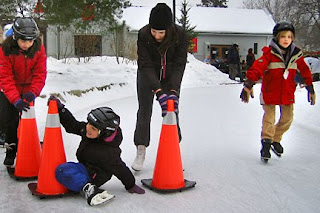 |
| Love that f/2.0 wide angle. |
My first need is a fast lens. In most cases, I do not like straight on flash photography. All too often, for 1/1000th's of a second you destroy the light and the shadow that drew your eye in the first place, and replaced that with harsh, straight on strobe.
Both the S95 and the LX5 have very fast, for point-and-shoots, lenses. At wide angle both can be opened to a maximum aperture of f/2.0. Nice.
Team a fast lens with a big chip and you have set the stage for a camera that can shoot usable images at ridiculously high ISO settings. Both cameras, I believe, top out at 12,500 ISO! If you think that's crazy, you're right. Images shot at such a high setting suffer, but they are usable.
Owning the Canon S95 has been a delight. The shutter lag is noticeable to me, but then I used a DSLR for many years with absolutely no shutter lag. If you prefocus the camera by depressing the shutter button half way, the shutter lag is maybe a fifth of a second.
 |
| A small camera is always handy. My Canon S90 is rarely far away. |
Let me end this with some info from Dana Wollman's recent article in the Huffington Post. Note how Wollman starts right out by accenting the S95's small size when declaring the Canon the best point-and-shoot.
Pros: About as compact as a deck of cards, the S95 looks like any other point-and-shoot, but its photos are lovely enough that even people used to carrying bulkier, more advanced digital SLRs will be impressed. Although it's the same size as other cameras, the body feels particularly solid, well-made.
This camera from Canon Inc. has an unusually large sensor for a small camera, which means clearer, sharper pictures, especially in low light. It takes generally beautiful shots and does a better job of blurring the background than other point-and-shoots. The camera also shoots HD video (1280 x 720) and has an HDMI port, enabling people to connect the camera directly to a high-definition television. Serious photographers looking for a lighter camera will enjoy the various manual controls.
 |
| Under low light levels, the Canon S90 sings. |
Let me add, the short zoom criticism also holds for the Panasonic LX5. And one should never leave home without a second, charged, spare battery. Never! I spent almost six weeks traveling across North America last summer and not once did I miss a picture because of a dead battery.
Since relatively short zooms may not answer all your needs, I know they don't for me. That is why I also own the Fuji HS10.
I love that little camera but note I said love and not like. It has some, what my wife would call, idiocrazicies. The time lag is truly annoying but when that little camera with its incredible zoom delivers, all is right with the world. There is a clunker of a work-around for the shutter lag problem and I've learned to rely on it but it is still a clumsy work-around. I talked about this in length here: Best Frame Capture.
 |
| A long lens is sometimes one's biggest need. Think Fuji HS10. |
You may have noticed one common thread here: Size. I carried a "door stop" camera for years for work. I don't want to lug a monster camera and bag of lenses in my retirement.
In the end, if you do your homework, you will love the camera you buy and you will make beautiful pictures together.
And if you want the 'marriage' to work, don't have a wandering eye. Lust destroys relationships.












